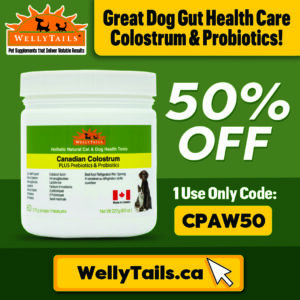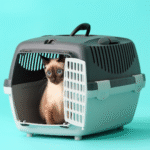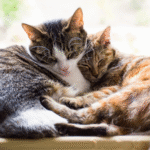The oral health of our dogs and cats is something that is easily overlooked, and, if left untreated, can have a negative impact on their quality (and quantity) of life. It’s common practice for veterinarians to assess the mouth of your pet annually as part of their preventative care check-up; however, between appointments, it’s up to you to maintain the health of their teeth and gums by creating a suitable and reasonable home-care regimen.
Why is Dental Home Care Important?
Developing an at-home oral health regimen is just as important for your pet as it is for people. This is because if plaque (and plaque bacteria) remains on the surfaces of the teeth, it can lead to gingivitis (inflammation of the gums). Then, if the gingivitis worsens, it begins to affect the stability of the teeth, and it will ultimately harden into tartar (calcified plaque). Tartar is that unsightly brown/yellow material that is visible on the teeth; plaque is invisible to the naked eye, which makes it that much more subtle and easy to forget about.
Plaque begins to form on a tooth anywhere from three to five minutes after eating and then hardens within 72 hours. If this cycle isn’t broken, then the only way to remove the tartar is through professional cleaning at your veterinary clinic under general anesthesia. The rise of anesthesia-free dental cleanings only increases the risk of untreated dental disease, as these are purely aesthetic cleanings only.
Eventually, the teeth will loosen, severe halitosis (bad breath!) sets in, and oral pain develops. If dental disease is left untreated, the constant stream of bacteria into the dog or cat’s bloodstream will start affecting their heart, liver, and kidneys—leading to other potential health conditions.
However, genetics aside, dental disease is largely preventable!
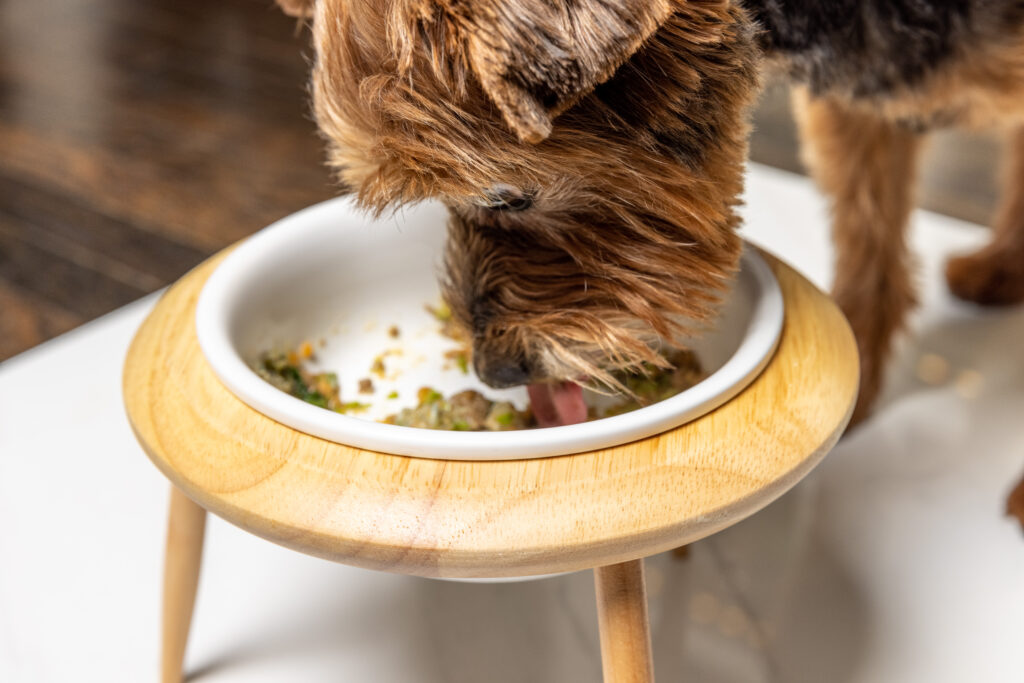
What Does a Home-Care Regimen Look Like?
To break the plaque-to-tartar cycle, it’s important to institute a daily regimen. There are four main things that can be done daily (species dependent): tooth brushing, chewing aids, water additives, and diet. To have the most success, best practice is to use a combination of two or three of the options that are most suitable to your lifestyle. Most options can (and should be) done daily, especially tooth brushing.
Along with brushing your pet’s teeth, nutrition plays a large role in reducing the severity of dental disease. Feeding your dog or cat a complete and balanced diet is crucial for their general wellness and oral health. This can look like feeding them either a commercial diet from the pet store, a prescription dental diet (large kibble designed to scrub the teeth, thus removing plaque), or having freshly prepared recipes delivered right to your door from Tom&Sawyer!
NOTE: If dental disease is already present, it’s best to avoid starting a dental home-care regimen because there might be discomfort present. If you are worried about pain, even if your pet is eating without issue, consider switching to a soft, easy-to-chew and ingest diet like a gently cooked recipe from Tom&Sawyer. For dogs, some of the tastiest meals are Classic Pork Stew, Coconut Chicken, Italian Beef Pasta, and Turkey Gobbler. For our feline friends, Chicken Cacciatore is the cat’s meow!
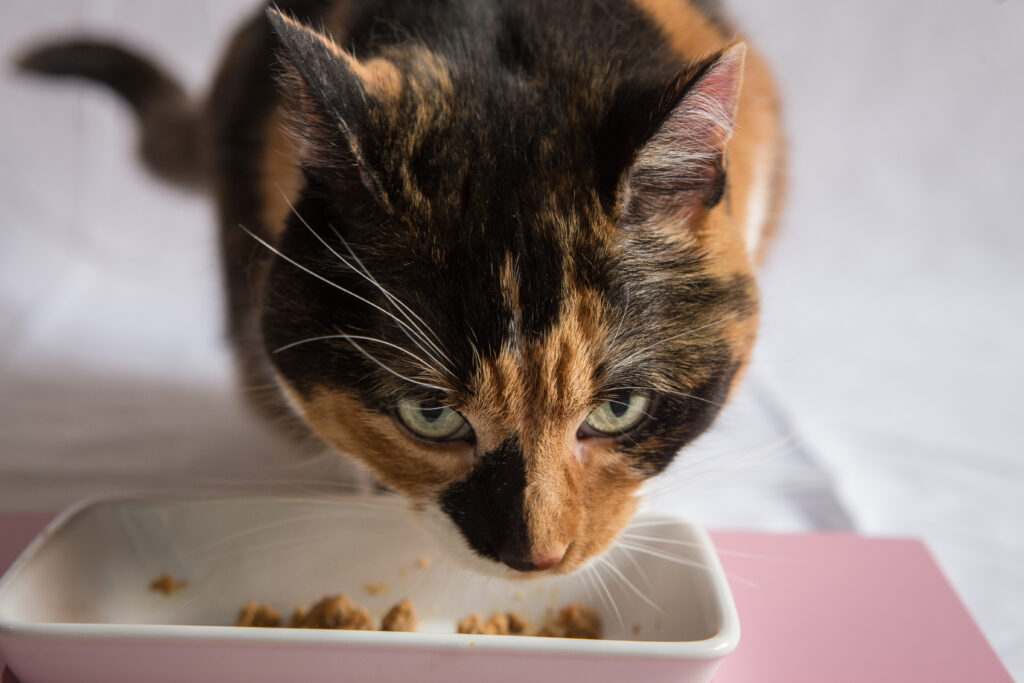
What to Use & What Not to Use
For tooth brushing, use a soft-bristled toothbrush and pet-friendly toothpaste that can be purchased at your local veterinary clinic or pet supply store. Human products contain fluoride and sweeteners that can be toxic to dogs (e.g., xylitol). For chewing aids, I recommend following the “Knee Cap Rule” created by board-certified veterinary dentist Dr. Fraser Hale, DVM, FAVD, DiplAVDC: “If your dog would not want me to hit them on the knee cap with it, they should not be allowed to chew on it!” Products that are too hard can fracture teeth or splinter and cause foreign bodies in the gums, leading to further dental issues. When it comes to chewing aids, giving one daily can provide maximum benefits (just be mindful of the calories). Since cats aren’t recreational chewers by nature, the other home-care options like water additives, diet, and tooth brushing will be your best bet. We encourage you to chat with your veterinary team about what would work best for them!
It’s a great idea to be aware of what’s going on in our pet’s mouth by taking a look and smelling it regularly—sniff test by simply lifting the lip! This sounds odd, but a bad odour from the mouth can be an indicator that dental disease is present. A dog or cat’s breath should have a neutral odour. If you notice a bad smell, have them assessed by your veterinarian. The earlier the disease is diagnosed, the quicker your pet can be treated and back to feeling their best! If you can organize a dental home-care plan that works for both you and your pet, then you are on the right path for good health and success.
If you would like to try out the culinary-inspired meals from Tom&Sawyer, you can find a retailer near you here.
Reference:
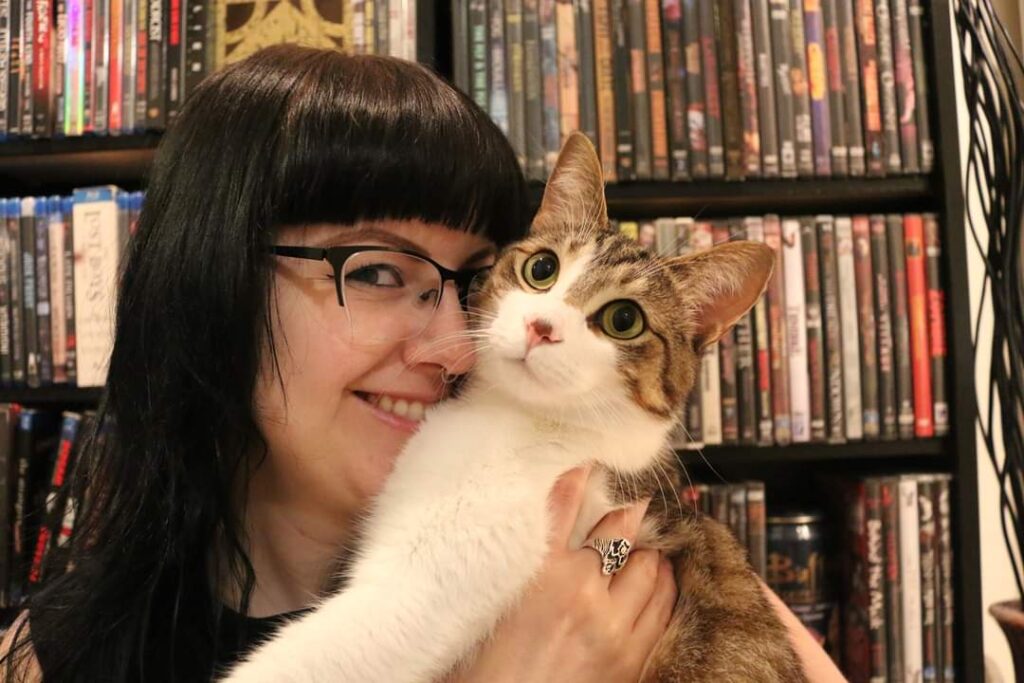
About the Author:
Kelly Gredner is a Registered Veterinary Technician with 10 years as a Veterinary Technician Specialist in pet nutrition. Kelly recently joined Tom&Sawyer and is now a part of their Nutrition Team as the Veterinary Nutrition Consultant and Technical Specialist! She enjoys helping pets through nutrition, one bowl at a time. Kelly currently resides in Toronto with her two rescue cats, Mikey and Sidney.

About Tom&Sawyer:
Tom&Sawyer was started to create the highest-quality fresh, gently cooked, science-backed nutritious meals for a puppy named Sawyer who refused to eat kibble. Since 2015, Tom&Sawyer has been making hand-crafted meals for cats and dogs that are developed with the help of vets, animal nutritionists, and labs to create complete and nutritionally balanced meals that are 100% AAFCO Human Grade.




